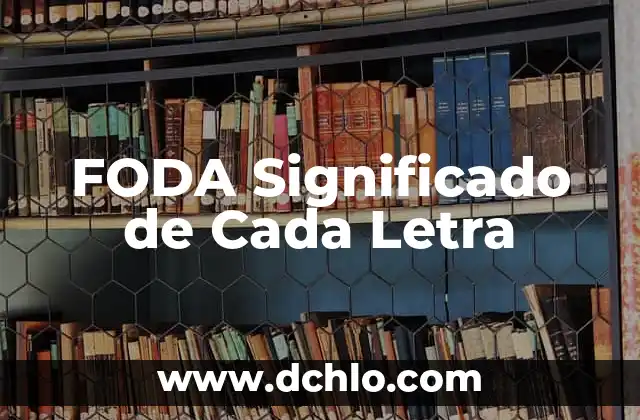In the realm of documentation, especially within legal and official contexts, the term fe de erratas holds significance. It refers to a correction document that rectifies errors found in official papers after their publication. This certificate is crucial for maintaining the integrity and accuracy of documents, ensuring that all information is reliable and trustworthy.
¿Qué es Fe de Erratas?
Fe de erratas is a formal document issued to correct errors in previously published official documents. It is commonly used in legal, academic, and governmental contexts to address mistakes such as typographical errors, incorrect data, or omissions. This document ensures that the original material is accurate and reliable, which is essential for maintaining legal and professional standards.
Historically, this practice dates back to the early days of publishing, where errata lists were appended to books to correct mistakes. This tradition has evolved into the modern fe de erratas, adapting to digital documentation while retaining its essential purpose.
The Importance of Corrections in Official Documentation
Correcting errors in official documents is vital for upholding their credibility. Whether it’s a legal contract or an academic paper, even minor errors can lead to misunderstandings or legal disputes. The process of issuing a correction ensures that the integrity of the document is maintained, fostering trust and reliability.
También te puede interesar

Rompecabezas de Amor es una canción que ha cautivado a muchos con su letra llena de significado. Este puzzle of love explora temas universales que resuenan en el corazón de los oyentes.

El rap, un género musical y cultural que ha revolucionado la forma en que expresamos nuestras emociones y pensamientos, no solo se trata de rimas y ritmos. Cada letra de esta palabra, que significa rhythmic african poetry (poesía africana rítmica),...

El FODA es un marco estratégico ampliamente utilizado en negocios y marketing, originario de la metodología SWOT (Fortalezas, Oportunidades, Debilidades y Amenazas). Cada letra representa un componente clave del análisis estratégico, ayudando a las empresas a identificar y aprovechar factores...

La palabra familia es un término que evoca sentimientos de unión, amor y pertenencia. Cada letra de esta palabra oculta un significado especial que refleja los valores y la esencia de lo que significa ser parte de una familia. A...

Antes de comenzar a crear nuestra historia con música y letra, debemos prepararnos con algunos elementos fundamentales. A continuación, te presento los 5 pasos previos para prepararte:

Antes de empezar, asegúrate de tener los siguientes materiales y habilidades:
Ejemplos de Fe de Erratas en Diferentes Contextos
- Legal Contracts: Corrections in names, figures, or clauses to ensure all parties understand their obligations accurately.
- Academic Papers: Rectifying statistical data or references to maintain the research’s integrity.
- Official Decrees: Amending dates or provisions in governmental publications to reflect accurate information.
Understanding the Concept of Document Correction
The concept of document correction involves a systematic process to identify and rectify errors. This includes drafting the correction document, obtaining necessary approvals, and distributing it to relevant parties. The implications of such corrections are significant, as they prevent potential disputes and ensure compliance with legal standards.
Key Aspects of Fe de Erratas: A Comprehensive List
– Purpose: To correct errors in official documents.
– Content: Detailed description of errors and their corrections.
[relevanssi_related_posts]– Legal Implications: Ensures document validity and legal standing.
– Examples: Used in contracts, academic papers, and official decrees.
Correcting Errors: A Necessary Process in Documentation
Error correction is an essential part of document management. It addresses oversights that could otherwise lead to confusion or legal issues. This process underscores the importance of attention to detail in professional settings.
¿Para qué sirve Fe de Erratas?
Fe de erratas serves to correct errors in official documents, ensuring their accuracy and reliability. It is particularly useful in legal and academic contexts, where precision is paramount. Examples include correcting names in contracts or amending data in research papers.
The Role of Erratum Certificates in Legal Processes
Erratum certificates play a crucial role in legal processes by ensuring the accuracy of contracts, decrees, and other legal documents. They prevent misunderstandings and potential legal challenges, providing a formal method to address and correct errors.
Ensuring Accuracy in Official Publications
Maintaining accuracy in official publications is achieved through meticulous review and the use of correction certificates. This ensures that the information conveyed is reliable and trustworthy, upholding the integrity of the document.
Unraveling the Significance of Fe de Erratas
The significance of fe de erratas lies in its role as a corrective mechanism. It not only fixes errors but also reinforces the reliability of official documents, ensuring they remain legally valid and professionally credible.
Where Does the Term Fe de Erratas Come From?
The term fe de erratas originates from Spanish legal terminology, where fe means faith or affidavit and erratas refers to errors. This linguistic background highlights its purpose as a sworn declaration of corrections.
Erratum Certificates: More Than Just Corrections
Beyond correcting errors, erratum certificates hold legal and procedural significance. They demonstrate a commitment to accuracy and transparency, essential in maintaining trust in official documentation.
How Does Fe de Erratas Contribute to Document Reliability?
Fe de erratas enhances document reliability by providing a formal record of corrections. This assurance is vital in legal and academic settings, where the accuracy of information is critical.
Using Fe de Erratas: Practical Examples and Applications
Practical applications of fe de erratas include:
- Legal Contracts: Correcting clauses to prevent disputes.
- Academic Papers: Adjusting data to maintain research integrity.
- Official Notices: Amending dates or provisions for clarity.
Each application underscores the versatility and necessity of this corrective tool in various professional contexts.
INDICE

